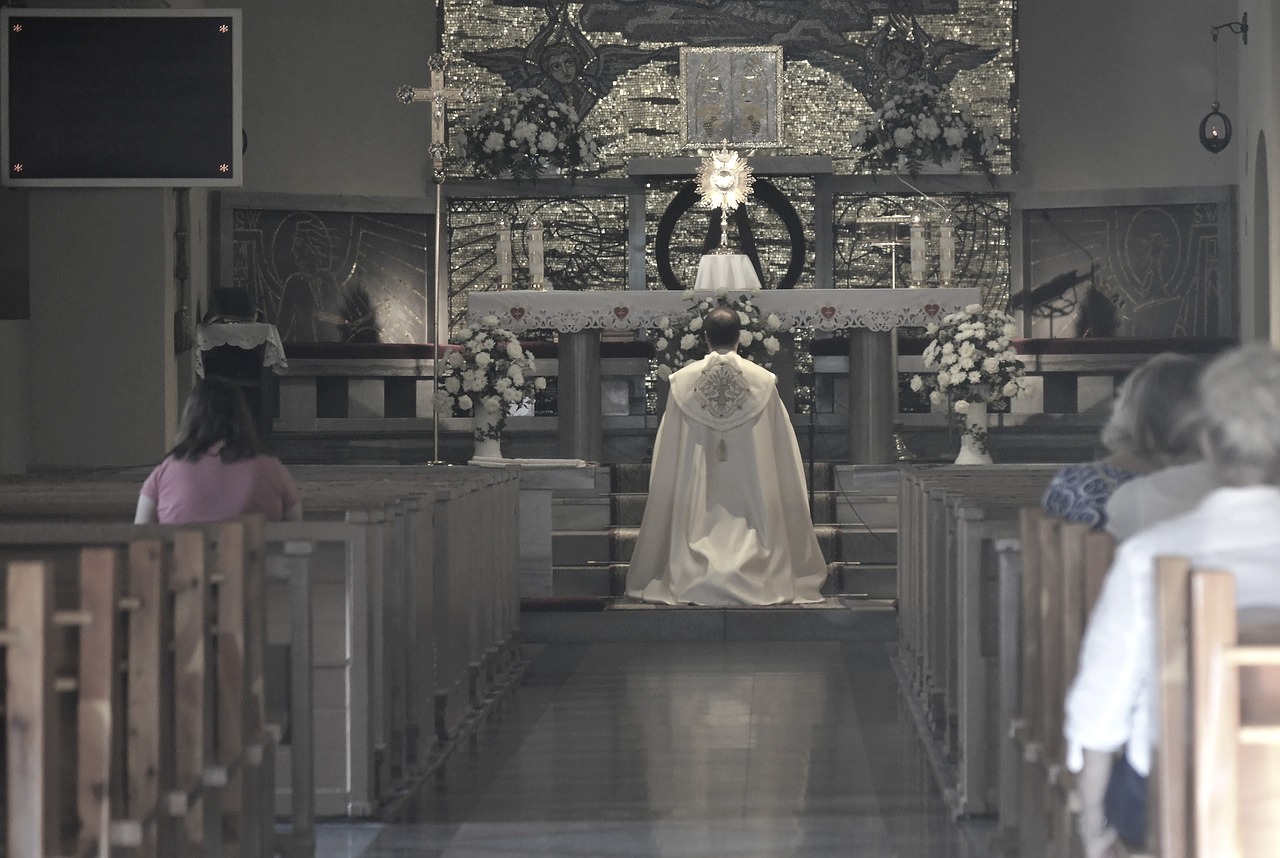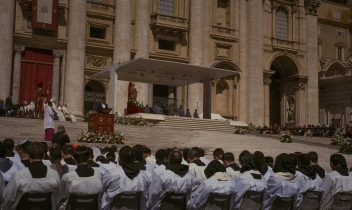No products in the cart.
Return To Shop
When you read about the high priest tear his clothes in the Bible, you might wonder, “Why did he do that, and what did it mean?” This act might seem strange at first, but it carries important symbolism. In ancient times, tearing one’s clothes was a sign of extreme emotion whether it was grief, anger, or shock. For the high priest, tearing his clothes was a reaction to a serious event that deeply disturbed him. Understanding why he did this helps us better understand the customs and feelings of the time. Let’s take a closer look at the story and uncover the deeper meaning of why the high priest tore his clothes.
The High Priest Tore His Clothes
One of the most famous instances of the high priest tearing his clothes occurs in the New Testament, specifically in the Gospel of Matthew. In this account, Jesus, standing trial before the high priest Caiaphas, is asked if He is the Son of God. Jesus responds affirmatively, and in a dramatic reaction, Caiaphas tears his clothes, an act that signifies a profound emotional or spiritual reaction to what he perceives as blasphemy. The tearing of the high priest’s clothes in this moment was a visible declaration of his condemnation of Jesus’ words and a rejection of the idea that Jesus was the Messiah.
This incident carries both symbolic and practical significance. The high priest, as the spiritual leader of the people, was expected to preserve the purity of the faith. Jesus’ assertion that He was the Son of God was considered a direct challenge to the religious establishment and a claim that was blasphemous to Caiaphas. Tearing his clothes was a traditional Jewish gesture to express grief or dismay, in this case, at the supposed sacrilege.
In Leviticus 21:10, the Torah prescribes that a high priest should not tear his clothes in times of mourning or distress, except in the case of blasphemy. This creates an even stronger contrast with the high priest’s actions during Jesus’ trial, emphasizing the gravity of the accusation and the spiritual turmoil it caused.
The Significance of Tearing Clothes in Ancient Traditions
In ancient Israel, tearing one’s clothes was a way to show strong feelings like sadness, anger, or spiritual pain. It wasn’t just a physical action it was a way to show how deeply someone was affected in their heart and soul. For the high priest, who had an important and sacred role in the community, tearing his clothes usually happened when something wrong, like blasphemy or a big mistake, occurred. It could also happen when he feels guilty or very upset. When the high priest tore his clothes, it was a way of showing how serious the situation was. As a leader who helped keep religious practices pure and holy, his actions whether out of deep emotion or as part of a ritual meant a lot to the people around him.
High Priest Tear his Slothes as a Symbol of Holiness
The high priest’s attire in ancient times was elaborate and full of significance. The garments were designed to reflect purity, holiness, and separation from the ordinary. why did the high priest tear his clothes? the high priest’s role was to act as the intermediary between God and the people of Israel, especially on the Day of Atonement, when he would enter the Holy of Holies to offer sacrifices for the sins of the people. The high priest wore several layers of clothing, including the ephod (a richly decorated vestment), a breastplate, a robe, and a turban. These garments were not just for show; they were symbolic of his role and the sanctity of the duties he performed.
In this context, the act of tearing such carefully constructed clothing carried a heavy symbolic weight. It was as though the high priest was not just expressing personal grief, but was signifying that the very holiness of the situation had been violated or corrupted. In the case of the high priest tearing his clothes in reaction to Jesus’ proclamation, the act was not just about personal affront but also about an institutional rupture. The high priest’s garments represented the Jewish faith and its sacred traditions, and tearing them was an act that symbolized a crisis in the faith itself.
The Priest with Dirty Clothes: A Metaphor for Moral Corruption
While the high priest’s act of tearing clothes was a sign of mourning or rejection, there are also instances in religious texts where priests, or figures of authority, are metaphorically described as wearing “dirty clothes.” In some interpretations, the “priest with dirty clothes” represents a moral or spiritual corruption that undermines their sacred role. Dirty clothes, in this case, symbolize sin, guilt, and failure to live up to the high standards expected of a religious leader.
In the Bible, the prophet Zechariah describes a vision where the high priest Joshua stands before the Lord, dressed in filthy garments, symbolizing the sin of the people. However, Joshua’s clothes are later replaced by clean garments as a sign of forgiveness and purification (Zechariah 3:3-5). This passage illustrates the idea that even priests, who wear sacred attire, can be “dirtied” by sin but are also capable of redemption through divine intervention.
Jesuit Priest Clothing in A Modern Perspective
While the ancient high priest’s attire was richly detailed and symbolic, modern-day clergy—such as Jesuit priests wear more contemporary versions of religious clothing. Jesuit priest clothing, for example, tends to be more understated than the elaborate attire worn by high priests in biblical times.
A Jesuit priest typically wears a simple black cassock or clergy shirt, often with a white collar to signify their role within the Church. Jesuit priests, as part of the Society of Jesus, take a vow of poverty, which is reflected in their modest and simple clothing choices. Despite the simplicity of their attire, Jesuit priests are deeply committed to service, education, and social justice, wearing their garments as a reflection of their vows and the humility they embody.
High Priest Clothing in the Bible
The Bible provides detailed descriptions of the high priest’s clothing in the Old Testament, especially in Exodus 28. The garments, which included the ephod, breastplate, tunic, and crown, were designed with specific instructions from God. Each element of the high priest’s clothing was rich with symbolism, from the twelve stones representing the twelve tribes of Israel to the golden bells on the hem of the robe, which rang as the priest entered the Holy of Holies.
These garments were not just for ceremonial purposes; they symbolized the holiness of the priest’s office and his role in mediating between God and the people. The high priest’s attire set him apart from other priests and was a sign of his unique status within the religious hierarchy.
Priest Clothing for Mass and Modern Liturgies
Priests in modern times wear various types of clothing depending on the liturgical season or the occasion. For example, during Mass, the typical attire includes the alb, stole, and chasuble. The alb is a simple white robe, symbolizing purity, while the stole represents the priest’s authority to perform sacraments. The chasuble is the outermost garment, worn over the alb and stole, and its color often changes with the liturgical season (e.g., green for ordinary time, purple for Advent and Lent, red for feasts of martyrs).
For many modern priests, the traditional clothing worn for Mass serves as a continuation of the ancient traditions, albeit with a more simplified and functional approach. However, these garments still carry deep symbolism and are integral to the priest’s role in leading worship.
Conclusion
The act of the high priest tear his clothes, particularly in reaction to Jesus’ proclamation, serves as a powerful symbol of rejection and spiritual dismay. It is an expression of both personal and institutional turmoil.
The high priest’s garments, rich in symbolism and holiness, carried great weight in both ancient and modern religious contexts. Whether discussing the high priest’s attire in biblical times or the simpler clothing of modern priests, such as Jesuits, the significance of priestly clothing remains a crucial part of religious identity.
In modern times, where do priests buy their clothes? There are specialized stores, such as Holy Clergy, that offer a wide variety of priestly attire, from cassocks to chasubles, ensuring that priests have access to the appropriate clothing for liturgical celebrations and sacred rituals.
FAQs
Why did the high priest tear his clothes?
The high priest tear his clothes as a symbolic gesture of grief, shock, or condemnation, particularly in reaction to what he perceived as blasphemy by Jesus.
What is the high priest’s clothing called?
The high priest’s clothing included several garments, such as the ephod, breastplate, robe, and turban, each with specific symbolic meanings.
Where can I buy priest clothing?
Priests can purchase their clothing from specialty stores like Holy Clergy, which offers a wide range of clergy attire for different occasions.
What is the significance of the priest’s attire?
The priest’s attire symbolizes their role in the religious community, their holiness, and their dedication to serving God and the people.








Recent Comments